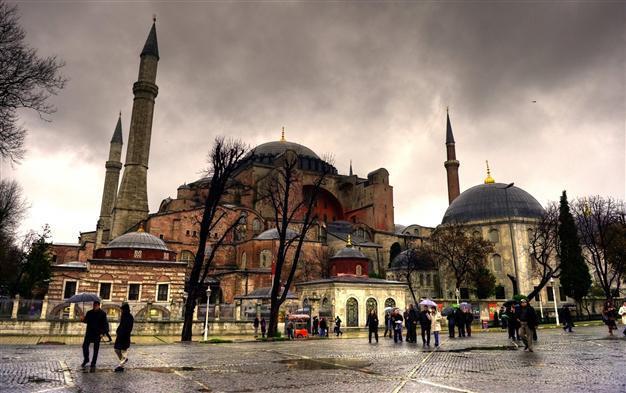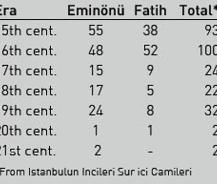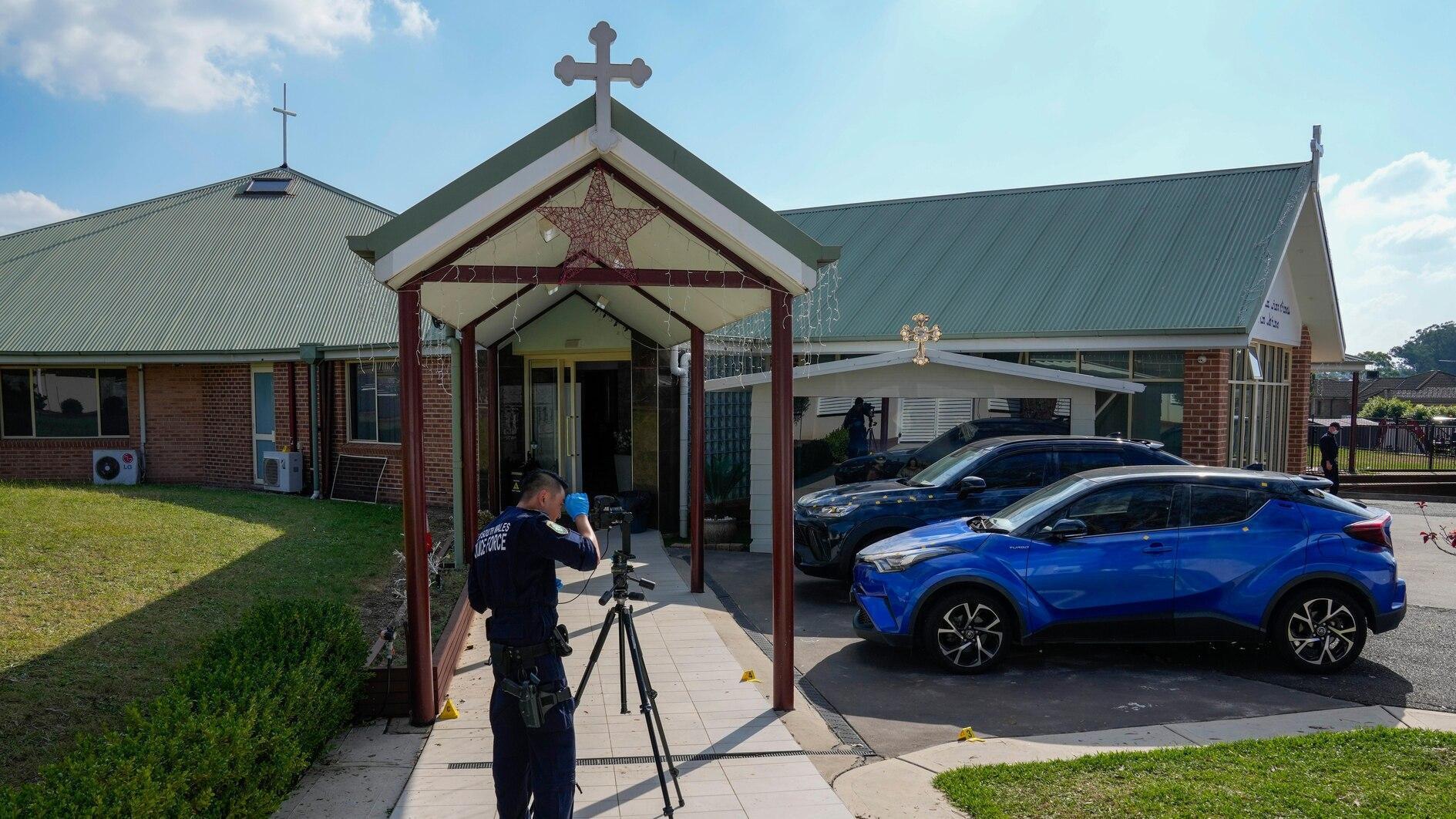Ottoman mosques hide riches inside
Niki Gamm

Hagia Sophia Mosque. DAILY NEWS photo, Emrah GÜREL
Here’s a mosque, there’s a mosque. Everywhere there’s a mosque. At least you would think so if you were a Turkish-speaking tourist in taxi driver Kerim’s automobile. He knows all of the most important ones. According to a recent Culture, Inc. publication, “Istanbul’un İncileri Sur İçi Camileri” [The Pearls of Istanbul, the Mosques inside the Walls], there are 295 mosques in the Eminönü/Fatih area alone, over 65 percent of them built in the 15th and 16th centuries alone.When one looks at the architecture of a mosque, the first thing that strikes the viewer is the lack of external decoration. Yes, there are some exceptions but as a general rule, it is the interior that is important. The mosque may even be hidden by adjacent buildings or may only be identified by a minaret to distinguish it from other buildings in its immediate vicinity. Although the mosque is likely to be capped with a dome, that dome can only be seen from some distance away because, on approach, it disappears behind smaller domes or the roofs of the surrounding structures. As the late Islamic scholar, Ernst J. Grube, has pointed out, the dome seems to be “a general symbol, signifying power, the royal city, the focal point of assembly.” He described this as “‘hidden architecture’ – that is, architecture that truly exists, not when seen as monument or symbol visible to all and from all sides, but only when entered, penetrated and experienced from within.”
Actual mechanics camouflaged
On turning to interior space in mosques, Grube expressed the idea that decoration in Islamic architecture was mainly to camouflage the actual mechanics of the building. For instance, one has the impression that the dome is floating in spite of the walls, pillars and vaults that hold it up. “The multitude of decorative treatments of surfaces in Islamic architecture, the use of almost every conceivable technique and the development of a rich repertory of designs – from geometric abstract shapes to full-scale floral patterns, from minutely executed in a full variety of calligraphic styles to the monumental single words that serve as both religious images and decoration – is without parallel in the architecture of the non-Muslim world.” While Grube may have been generalizing, his description fits the large, monumental mosques built in Istanbul.

The interior of Süleymaniye Mosque.
Within the interior of the mosque, the most important angle is the qibla, a horizontal axis, that shows the direction of the Ka’aba in Mecca, that is, the direction in which Muslims are enjoined to pray. If the mosque is being newly built, then its walls are designed relative to this horizontal axis. On the other hand, when buildings such as churches which were designed for other purposes were adapted to Islam, the qibla had still to show the direction of Mecca and had to be placed wherever that was. For instance, a church’s nave and apse might be on an axis pointing toward Jerusalem, but the qibla that pointed toward Mecca would then have to be created off-center.
The niche that marked where the qibla met the far wall is the mihrab. The origin of the concave mihrab is dated to the first part of the eighth century when Coptic masons were brought to Medina to rebuild the Mosque of the Prophet. Such niches resemble the niches of Coptic churches. Its concave attribute magnifies the sound of voices.
 The only furniture within the mosque is the minber (pulpit) from which the imam (prayer leader) delivers the Friday sermon at the noon-time prayer. It is this that distinguishes the cami (mosque) from the masjid which is also a mosque but lacks the minber. Without it, the masjid can only be used for daily prayer services. In order to attend the Friday prayer service, the worshipper must perforce go to a larger mosque. Some minbers which might be made of wood, stone or metal reached as high as 10 meters in the Ottoman mosques, thus allowing the imam to be seen and heard over a wider area. The artistic quality could be very high depending on the mosque for which it was intended and the wealth of the benefactor.
The only furniture within the mosque is the minber (pulpit) from which the imam (prayer leader) delivers the Friday sermon at the noon-time prayer. It is this that distinguishes the cami (mosque) from the masjid which is also a mosque but lacks the minber. Without it, the masjid can only be used for daily prayer services. In order to attend the Friday prayer service, the worshipper must perforce go to a larger mosque. Some minbers which might be made of wood, stone or metal reached as high as 10 meters in the Ottoman mosques, thus allowing the imam to be seen and heard over a wider area. The artistic quality could be very high depending on the mosque for which it was intended and the wealth of the benefactor.Two other structures were built inside the Ottoman imperial mosque – one was a loge where the sultan and his officials might pray and the other was reserved for the muezzins who sounded the call to prayer.
Outside the mosque but within the courtyard in front of it are fountains for the ablutions necessary for ritual purity before entering the mosque and attending a prayer service. These were often very intricately designed in marble. Alongside the mosque and only rarely freestanding are the minarets, from one to, usually, four. It is thought that they originated in the bell towers attached to Christian churches which were used to sound the hours of prayer but were rather squat since they had to carry the weight of the bell. Removing that weight meant the minaret could become much more slender and graceful. The only exception in Istanbul to the four minarets is the Sultanahmet Mosque which has six, The apocryphal story goes that the sultan wanted his minarets made of gold (altın) but his chief architect who knew it was impossible built six (altı). When the sultan questioned him, the architect pretended that he hadn’t heard him correctly and so built six minarets.
‘Sur İçi Camileri’
If you’re thinking of finding some of the less well known mosques in the Eminönü/Fatih area, then a copy of “Sur İçi Camileri” by Sudi Yenigün is very useful, although somewhat unwieldy to carry. Not only does it provide location information arranged by local district but you’ll also find a description of the building’s architecture and the benefactor.
















